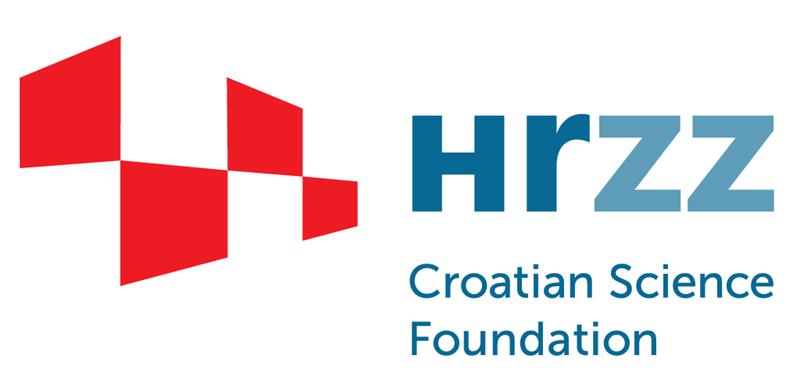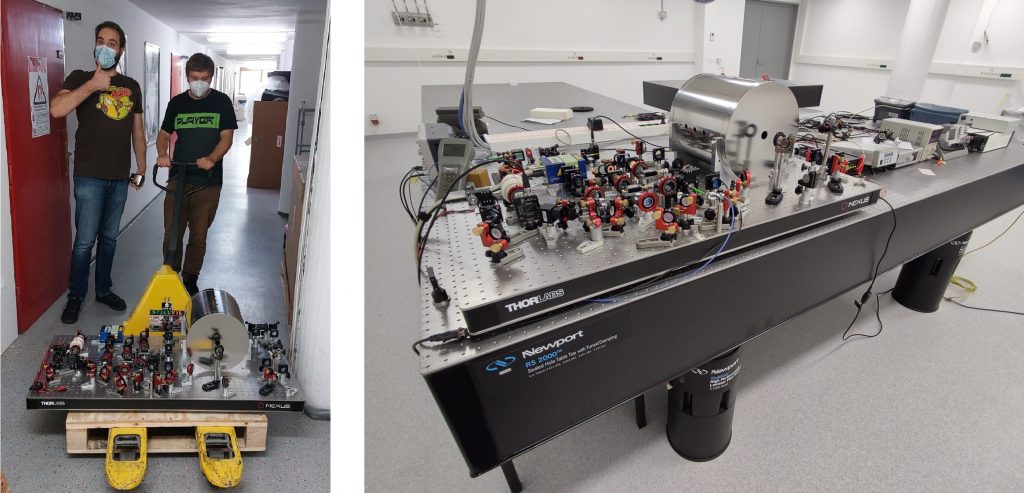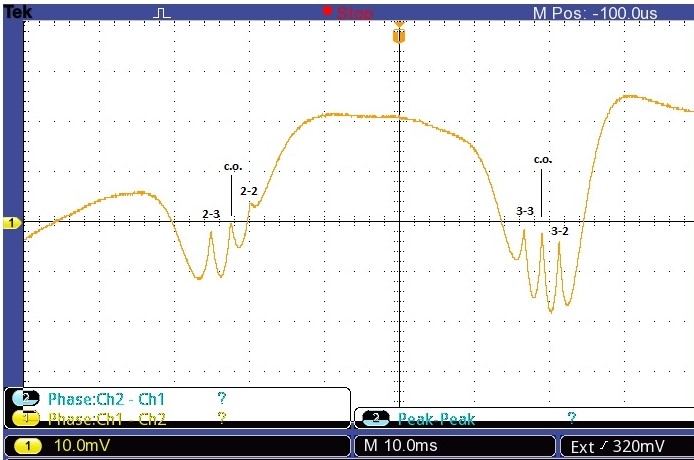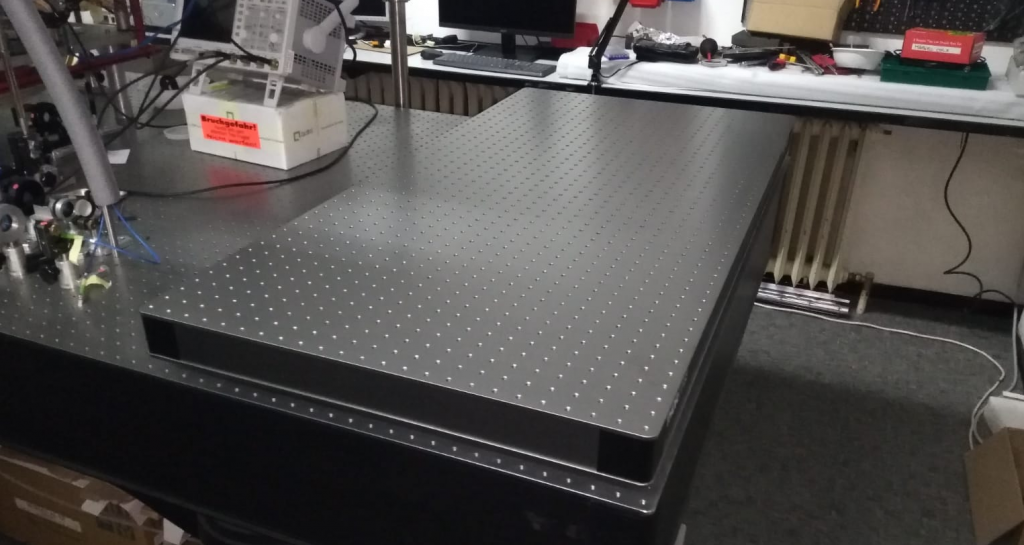

Rubidium vapor EIT quantum memories
Slovenia-Croatia bilateral research project „Development of building blocks for new European quantum communication network“, funded by the ARRS and HRZZ


IPS-2020-01-2616 Razvoj gradivnih blokova za novu europsku kvantnu komunikacijsku mrežu
Duration: October, 1st 2020 – September, 30st 2023. Budget: 1.499.999,00 HRK
Project team:
prof. dr. Anton Ramšak, University of Ljubljana, Slovenia
Mario Stipčević (PI), Matej Peranić, Martin Lončarić – Ruđer Bošković Institute, Zagreb, Croatia
Ticijana Ban, Damir Aumiler, Danijel Buhin, Mateo Kruljac – Institute of physics
General objectives:
In a collaboration between partners in Ljubljana and Zagreb, we propose to realize central building blocks towards building a functioning quantum repeater for a future quantum network using existing telecom infrastructure. These include narrow-band sources of entangled photons of telecom photons and atom-based quantum memories to store these photons and the quantum information they carry for a sufficiently long time to facilitate connecting distant communication partners.
Specific objectives:
a) Building narrow-band sources of entangled photons at the telecom wavelength of 1550 nm. One in Ljubljana, one in Zagreb.
b) Build two types of atom-based quantum memories in Ljubljana and Zagreb based on existing expertise with two candidate atom types, respectively: Cesium (Cs) and Rubidium (Rb).
c) Realizing high-efficiency, narrow-band frequency converters to interface the quantum memories with the entangled sources.
d) Demonstrate entanglement swapping with photons retrieved from two distinct quantum memories to establish entanglement of telecom photons originating from independent sources. To this end, one of the two stored photons again needs to be frequency converted.
Our team participate in WP3 – Atom-based quantum memories
In WP3, quantum memories will be built and tested in Ljubljana and in Zagreb. These memories will use Cesium atoms and Rubidium atoms, respectively. This approach allows us to build on existing expertise at the IJS and the IFZg, and we will have the opportunity to compare the performance of these two complementary approaches. As an additional benefit, we will have the opportunity to test the feasibility of performing entanglement swapping with photons originating in two different types of quantum memories – a key building block for future quantum networks where the architectures used at different nodes may be different. Building and testing the quantum memories in Ljubljana and in Zagreb will be covered in separate tasks in this work package.
October 2021.
We have moved our experiment to the new Lab in the CALT building.

October 2021.
Our colleagues at RBI have successfully demonstrated production of entangle photon pairs at 810 nm created in spontaneous parametric down-conversion. Visibility of this entangled photon pairs is above 99%.


Photo left is the setup for production of entangled photon pars at RBI. Polarization entangled photon pairs at 810 nm are created in spontaneous parametric down-conversion process. Figure right presents results of measurement proving that their SPDC source is producing entangled photon pairs with visibility above 99%.
September 2021.
We have successfully demonstrated storage of the quantum information inside our medium a.k.a. Quantum memory. Information is stored in the coherence between two ground states and can be retrieved at will, limited by the decoherence rate between ground states. In figure there are presented input (writing) pulse and output (read) pulse for different storage times.

August 2021.
Demonstration of the EIT on the 85Rb atoms in the glass cell. In figure (a) is the transmission spectrum of the EIT resonance, and in the figure (b) is the absorption coefficient spectrum of the EIT. Absorption coefficient spectrum is calculated from the transmission spectrum using Beer-Lambert law. EIT FWHM for the displayed data is (50.3 ± 0.1) kHz

July 2021.
We have finished our setup for the demonstration of the quantum memories based on the Rb vapour. Our 85Rb medium is placed in the glass cell inside of the mu-metal shield. Mu-metal shield is the high magnetic permeability material that shields stray magnetic fields which have negative effects to the EIT experiments.


Left is the photo of the complete setup for the Rb vapour EIT based quantum memories. On the photo right is the Rb glass cell with the heater element placed inside of the mu-metal magnetic shield.
June 2021.
We have built a optical cavity with the FSR of 10 GHz for filtering out extra modes produced by the Electro-optic modulator. It is built on the separate breadboard as a separate unit. Cavity is locked using side of resonance technique.


Left is the closeup photo of the optical resonator, and on the photo right is the complete cavity setup.
January 2021.
Laser has been set up and is ready for locking to the D1 Rb transition.


December 2020.
We have started our QM journey with setting up a new breadboard and laser with the wavelength of 795 nm.
